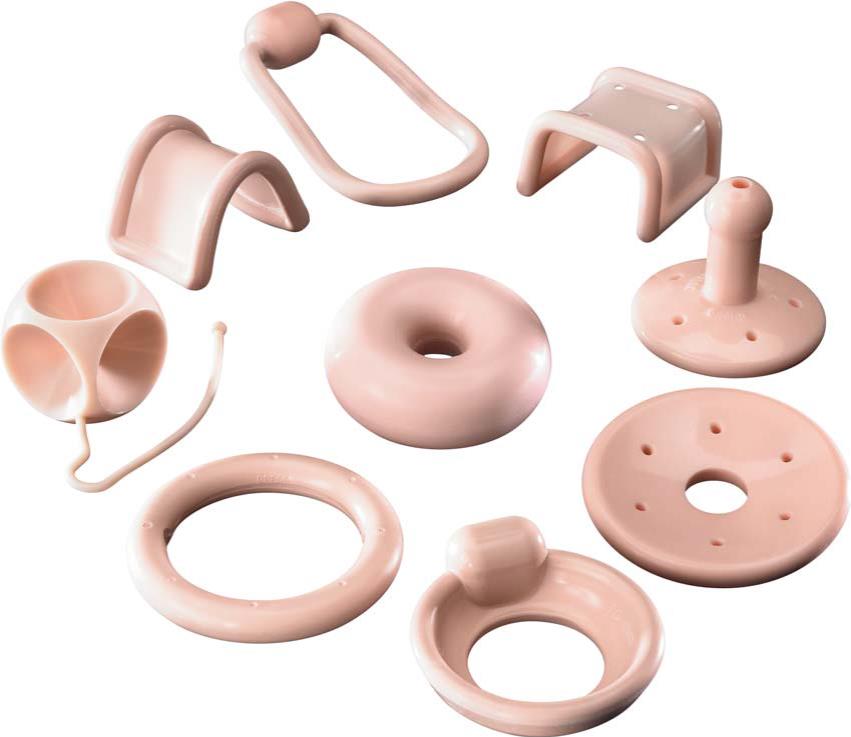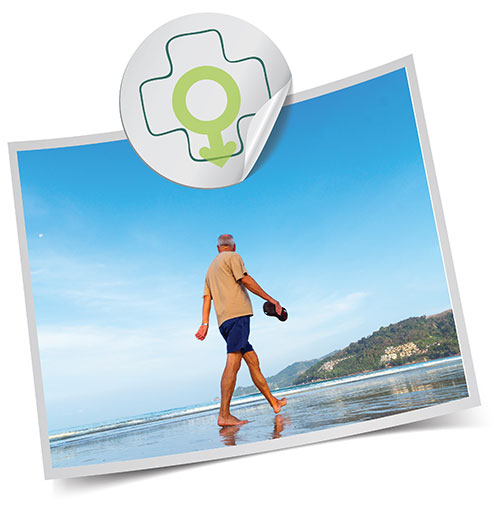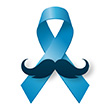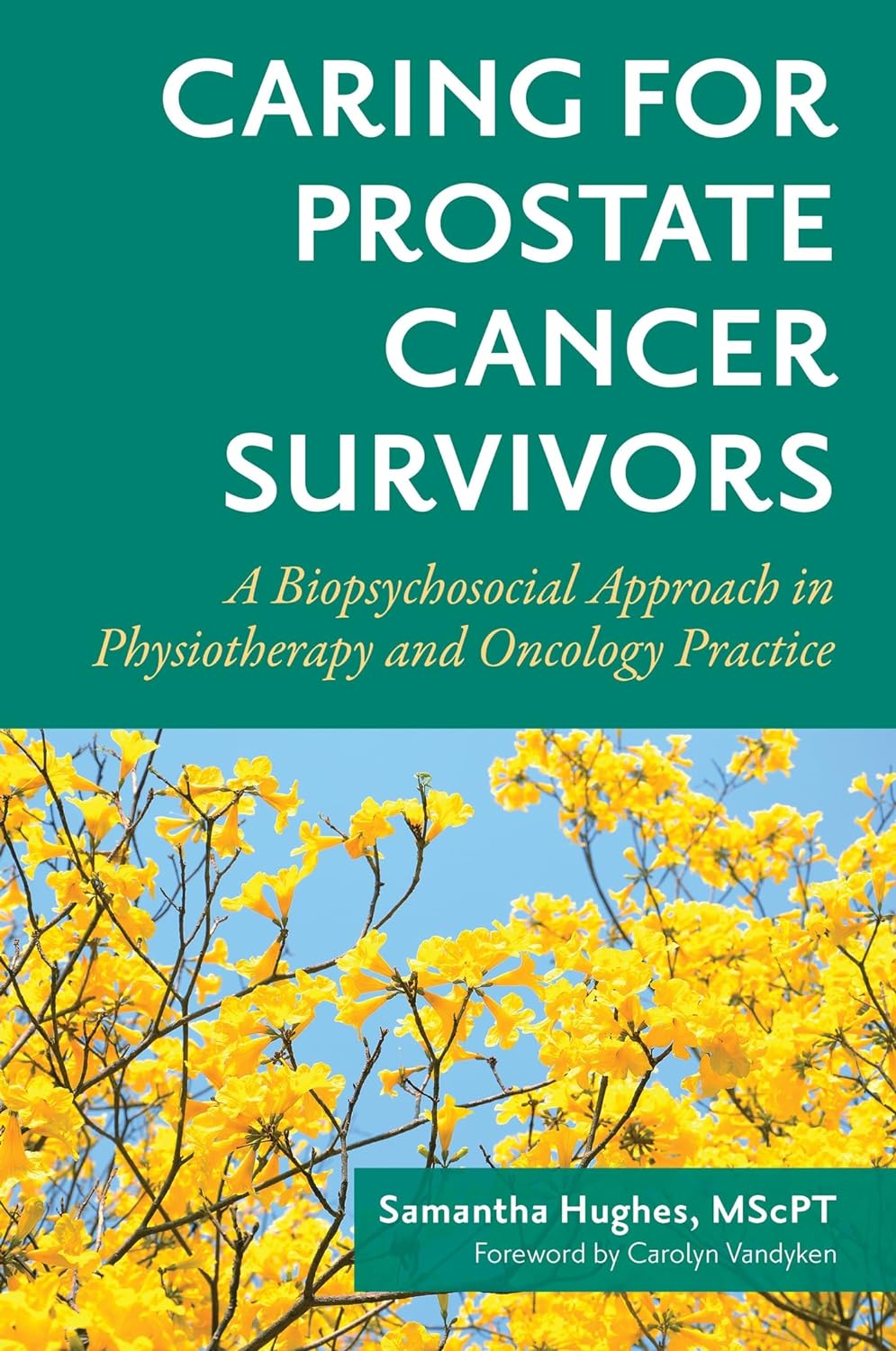 Urinary Incontinence (UI) is an involuntary escape of urine and it is more common than you think. There are 2 types of UI: Stress Incontinence (SUI) and Urge incontinence.
Urinary Incontinence (UI) is an involuntary escape of urine and it is more common than you think. There are 2 types of UI: Stress Incontinence (SUI) and Urge incontinence.
SUI happens when leakages occur with increased abdominal pressure, such as coughing, sneezing, running, lifting. Usually contributing factors for SUI are: pregnancy and delivery, menopause, obesity, prostate surgery in men. There is strong evidence that Pelvic Floor Muscle Training helps to treat SUI in women by strengthening or coordinating the pelvic muscles, therefore increasing tension on the sphincters (valves that close when you are not ready to urinate) when increased abdominal pressure occurs.
Urge UI happens when there is a strong urge to urinate. It is usually accompanied with urgency and frequency. Urge suppression techniques can help calm down the bladder, helping patients be more in control. There are other factors that can influence urgency and frequency such as pain, drinking habits (consuming caffeine, alcohol), tension coming from the pelvic floor muscles, neurological conditions, frequent urination out of habit, constipation, not drinking enough water or nerve damage that can happen after delivery, injuries or surgeries. Behavioural therapy, meaning changing your bad habits such as drinking habits, bowel routine etc... helps urge UI as it will eliminate contributing factors for the urgency and frequency.
Post from my Instagram:
Demythologizing Urinary Incontinence part 1
- First, Urinary Incontinence is treatable , most of the time conservatively, and it doesn’t matter the age, the sex or how many years has it been.
- Second, there are many reasons why a person has Urinary Incontinence (UI). Finding out the root of the problem is the most important thing: is it mostly physical, emotional, psychological, stress related, dysfunctional pressure systems, hormonal, neurological?
- I believe in treating the human being, not the body part. Everything is related and understanding the unique person, their beliefs, the burden of UI, the emotional response to UI, the individuals goals and expectations will help guide treatment and engagement.
- It is a collaborative effort between therapist and client. It is like building a jigsaw puzzle together, finding the right pieces at the right time and building this beautiful picture together.
Urge is a normal sensation to urinate which usually happens once your bladder is half full and it starts to squeeze. However, if you are not at a point where you are able to urinate you are able to control the sensation, and the bladder calms down again until it is appropriate to urinate. Urgency is an abnormal bladder contraction, can happen randomly and not necessarily once the bladder is half full. Urgency is a very strong sensation and it usually comes with a sensation of lack of control. It is affected by anxiety, stress and certain drinks such as caffeine. Usually urgency and increased frequency goes hand and hand.
There are many conservative treatments that can help urgency and frequency, such as urge suppression techniques (see handouts), changing drinking habits, and addressing other contributing factors, such as stress/anxiety, pelvic floor muscle dysfunction, breathing patterns, constipation, etc.
DRINKING WATER:
Lots of clients stop drinking water as a result of symptoms of urgency and frequency. But it is important to drink water, as it can help symptoms.
HOW?
Because it dilutes urine and makes your bladder calmer. Concentrated urine irritates the lining of the bladder and it can cause the bladder to be more active, so you feel the need to urinate sooner than it is really time to go.
If you already have a very active bladder and needs to go to the washroom multiple times, I recommend to drink water slowly. That way you are stretching the bladder slowly and will have better control!
Urinary Retention and Difficulty Urinating can be caused by the inability of pelvic floor muscles to relax. When urination occurs, bladder muscles (or detrusor) starts to contract and the urethral sphincters muscles relax. The sphincter muscles is supported by the pelvic floor muscles. If there is increase tension coming from the pelvic floor muscles, this can put pressure over the urethral sphincter and consequentially it may be difficult to urinate fully. Learning to relax the pelvic floor muscles can help improve urine flow, retention and difficulty urinating.
Pelvic Organ Prolapse (POP) happens when there is weakening on the supporting tissues in the pelvis and pelvic organs may start to drop downwards. It is very common in women, especially after childbirth and with aging. There are various degrees of POP so if you were diagnosed with POP, it doesn’t mean that it can’t be managed conservatively. POP does not usually cause pain or constipation, but it can be uncomfortable and may affect bladder, bowel and sexual function.
- Prolapsed Uterus (Uterine Prolapse): When the uterus and cervix fall down
- Prolapsed Bladder (Cystocele): When the bladder bulges and presses on the anterior vaginal wall
- Prolapsed Bowel (Rectocele): When the rectum bulges and presses on the posterior vaginal wall
Pelvic Floor Muscle Training can help POP symptoms. Increasing the pelvic muscles bulk (hypertrophy) helps increase the support on the pelvic organs and sensation of heaviness, pain and even lower back pain can be diminished or improved.
A pessary can be a very effective conservative treatment option
PESSARY A pessary is a silicone disc or ring that is specially fit for you by a doctor or a pessary nurse. The pessary is inserted into the vagina (like a tampon) where it helps to support the pelvic organs and stop them from coming down.
A pessary is a silicone disc or ring that is specially fit for you by a doctor or a pessary nurse. The pessary is inserted into the vagina (like a tampon) where it helps to support the pelvic organs and stop them from coming down.
You will be fitted with a pessary that is the right size and shape. It might take a few tries to find a pessary that will provide support without causing discomfort or slipping out. If the pessary is properly fitted you will not feel the pessary inside. Most cases, you will be taught to insert and remove the pessary on your own. It is recommended to remove the pessary every night if you are menopausal and do not use estrogen.
Certain pessaries can also be used to treat stress incontinence, because it puts gentle pressure on the urethra (the tube that drains urine) to help stay closed.
Image from coopersurgical.com
Fecal Incontinence is the inability to control defecation or bowel movements. True fecal incontinence is when stool is leaked when it is formed. Fecal Incontinence is treated with pelvic floor physiotherapy, as it can be caused by pelvic floor muscle dysfunction or anal laxity. Diarrhea is not considered fecal incontinence. Usually diarrhea is a result of intestinal problems or food sensitivity. To treat stool leakages caused by diarrhea I usually suggest dietary changes and consulting with dieticians and naturopathic doctors. Naturopathic doctors can order blood tests to check food sensitivity and allergies.
Constipation can be treated conservatively! So may people suffers from constipation. Constipation is stool that is usually hard to pass that can cause straining, or inability to have a bowel movement. Constipation is still named even if BM are regular but the stool consistency is not optimal. Usually treatment entails discussing dietary changes, looking at ways to efficiently defecate, toilet positioning and/or utilizing techniques that can help with peristalsis (food movement from the stomach to the large intestine).
Constipation can affect Urinary Incontinence, urgency, frequency and more. So usually, Constipation has to be treated first.
For more information on diet and toilet positions, visit my Handouts Section: FOR HEALTHY BOWEL HANDOUTS.
Bladder painful syndrome or commonly known as Interstitial Cystitis is not an infection or a disease process.
It is a condition where your nervous system has become de-regulated or sensitized. Normal bladder sensations are now experienced as pain.
Common symptoms are:
- Increased frequency
- Pain with bladder filling, which may or may not be relieved with urination
- Pain over bladder
- Vaginal pain or painful intercourse
- Pelvic floor muscle tension or difficulty in relaxing the pelvic floor.
Finding strategies to regulate your nervous system, address pelvic floor muscle dysfunction, address emotional or mental health status, use urge suppression techniques and relaxation can help symptoms.
Chronic pelvic pain should be addressed holistically and by using a biopsychosocial approach.
More information on Chronic Pelvic Pain CLICK HERE
Prostate Painful Syndrome or Chronic Prostatitis is a term used for chronic pain in the prostate area that is usually of unknown cause. There can be inflammatory or non-inflammatory prostatitis.
Symptoms of Prostate Painful Syndrome are:
- Constant urge to urinate
- Burning pain when urinating
- Difficulty starting urination, followed by an uneven flow
- Feeling as if the bladder is not fully emptied after urination
- Pain in the lower back, lower abdomen, above the pubic area, or between the testicles and anus
- Painful ejaculation
If no inflammation is found, this condition is usually treated as any other chronic pain syndromes. Using a biopsychosocial approach to address the nervous system that is up-regulated, addressing pelvic floor muscle dysfunction, addressing emotional or mental health status and using urge suppression techniques and relaxation can help symptoms.
More information on Chronic Pelvic Pain CLICK HERE
Pelvic Pain is an umbrella term that encompasses many symptoms and disorders. It includes location of pain such as pubic, tail bone, sacrum, lower back, groin, vaginal, penile, scrotum, bladder, perineum, pelvic floor, and lower abdomen. It also includes chronic pelvic pain syndromes such as prostatitis and interstitial cystitis. If you have pelvic pain with any bladder or sexual symptoms or pelvic pain during or after pregnancy, it is recommended to see a pelvic health physiotherapy.
Chronic Pelvic pain syndromes are usually not from an infection or a disease process.
It is a condition where your nervous system became de-regulated or sensitized.
Finding strategies to regulate your nervous system, address pelvic floor muscle dysfunction, address emotional or mental health status, use urge suppression techniques and relaxation can help symptoms. Usually, it should be treated holistically with a biopsychosocial approach.
Painful Intercourse (Dyspareunia) is treated with pelvic floor physiotherapy. There are many reasons why pain is experience during sex. Normally, sex doesn't equal pain and it can be treated.
- Painful sex after menopause
- Menopausal changes cause a decrease in moisture, elasticity and circulation in the vaginal canal. That can cause skin sensitivity and pain during intercourse. Desensitizing the skin, making sure the vaginal canal is moisturised and stretched can help to improve the quality of intercourse.
- Painful sex after pregnancy and delivery
- Changes and complications during pregnancy and delivery can cause skin sensitivity inside the vagina. The sooner it is identified and treated the faster it can improve. It is very important to mention to your health care provider if you are experiencing pain during intercourse after delivery, which continues for over 8 weeks post-partum. Fatigue can also cause low-libido, and hormonal changes can make the vagina dryer making penetration more uncomfortable. Pelvic floor physiotherapy can help improve vaginal sensation and pain post-partum, but it is important to identify the factors that are affecting your sexual health.
- Painful sex during the breastfeeding period
- While you are breastfeeding the vaginal secretions may diminish, and intercourse can be more uncomfortable. Make use of vaginal lubrications during sex, and keep re-applying if needed.
- Painful sex and endometriosis
For more information about Sexual Health: Click Here
Vaginismus is the involuntary (or persistent) contraction of the vaginal muscles when penetration is attempted. Usually, penetration is not achieved or it is achieved with increased pain. Understanding the route of why these involuntary contractions are occurring, assessing the pelvic floor musculature and introducing the idea of self-stimulation using the use of vaginal dilators can help. Most importantly, changing the nervous system's response to the "negative idea" of sex is very important. Treatment can involve counselling, pelvic floor relaxation, self-stimulation and stretching.
Vestibule Pain Syndrome (Vestibulodynia Provoked and Unprovoked).
Provoked Vestibule Pain Syndrome is pain experienced at the entry of the vagina (the vestibule area) only during penetration. The entry of the vagina has become over sensitive to pressure or touch and when the penis comes in contact, it produces pain. Addressing the vestibule sensitivity, the body's reaction when introducing the penis and any pelvic floor muscle change or dysfunction can help with symptoms. If vulva sensitivity is caused by emotional or psychological response then adding counselling or sex therapy can also help.
Unprovoked Vestibule Pain Syndrome is pain experienced at the entry of the vagina with or without penetration. It is usually caused by a change in the nervous system (up-regulation) which modulates pain. This should usually be treated holistically with a biopsychosocial approach and using strategies that can help modulate the nervous system (or down-regulate) such as mindfulness, mediation, Qi-Gong practices, desensitizing the vestibule (area at the entry of the vagina), counselling and address pelvic floor muscle dysfuntion (if that is the case).
More information on chronic pelvic pain: click here
Vulva Pain Syndrome (Vulvodynia) is chronic pelvic pain experienced on the vulva area.
This is usually caused by a change in the nervous system (up-regulation) which modulates pain. It should usually be treated holistically with a biopsychosocial approach and using strategies that can help modulate the nervous system (or down-regulate), such as mindfulness, mediation, Qi-Gong practices, desensitizing the vestibule (area at the entry of the vagina), counselling and addressing pelvic floor muscle dysfunction (if that is the case).
More information on chronic pelvic pain click here
Pelvic Girdle Pain (Pregnancy and Post Partum)
Pain experienced on the pubic symphysis, SI joint, sacrum, hips, lower back, coccyx, during pregnancy or post-partum can be the cause of body changes that happen during pregnancy. Understanding the hormonal changes, maintaining body alignment, strengthening the hip/sacrum stabilizers or modifying tasks and body movement during pregnancy/post-partum can help with symptoms. I use a combination of Rost Therapy, body alignment, fascial mobilization and a home exercise program to treat pelvic girdle pain. The goal is to address the pain as soon as possible, so it doesn't persist and cause centralized pain to the nervous system.
In most cases, I recommend the Rost Moves Mama app to address body adaptation. This improves pain during functional tasks such as sleeping position, reaching, walking etc.
I am now offering virtual consultations during pregnancy and post partum. Click here for more info.
 Prostate Cancer Surgery is one of the main cause of urinary incontinence in men. During surgery the internal sphincter (the sphincter that involuntarily controls urine leakage) can be damaged or removed. Loss of urine control will occur after surgery and might continue thereafter. Some men will regain function spontaneously in 6 months to 1 year, but up to 40% will continue to leak urine.
Prostate Cancer Surgery is one of the main cause of urinary incontinence in men. During surgery the internal sphincter (the sphincter that involuntarily controls urine leakage) can be damaged or removed. Loss of urine control will occur after surgery and might continue thereafter. Some men will regain function spontaneously in 6 months to 1 year, but up to 40% will continue to leak urine.
Pelvic Floor Muscle Training can help men suffering from incontinence and it should be the first line of treatment. It is very important to learn how to do the exercises properly, but even more important to teach your pelvic floor muscles how to function optimally. Learning to relax the muscles will also help to regain continence. Overdoing the exercises might cause the muscles to be hyperactive, and therefore these muscles will not be able to help men functionally.
Men's health Page Prostate Surgery Book Book your consult

Erectile Dysfunction (ED) is the inability to develop or maintain an erection. It can be common in men older than 40 years of age and it can be caused by many factors (physical and psychological). Occasional ED is not uncommon, it can be caused by stress, relationship problems or a underlining medical condition that may have not been diagnosed. If you are experiencing ED, it is suggested to go see a medical provider for a check up first before seeking other forms of therapy.
Common causes include:
- Diabetes
- Cardiovascular disease
- Low Testosterone
- Kidney Disease
- Stress/Anxiety
- Depression
- Drug or Alcohol (Extensive use)
- Peyronie's Disease
- Injury to the pelvis or pelvic nerves
- Pelvic Floor Muscle Dysfunction
PELVIC FLOOR MUSCLE DYSFUNCTION AND ERECTILE DYSFUNCTION
When a man is sexually excited, muscles in the penis relax. This allows for increased blood flow to the penis. As the penis chambers fill with blood, the penis grows rigid. The inability to relax the penile muscles can change erectile function including difficulty maintaining an erection. Pelvic Health Physiotherapy can help men learn how to relax the penile muscles and pelvic muscles in order to functionally be able to keep these muscles relaxed before and during erection. This can help improve sexual function in men.
Peyronie's Disease is a condition that causes a curvature in the penis, due to the formation of scaring over the penile sheath. This condition can be caused by trauma, cardiovascular disease, circulatory changes and surgery. Novel therapy for this condition includes the use of therapeutic ultrasound, massage and pelvic floor physiotherapy.
Painful Urination (Dysuria)
